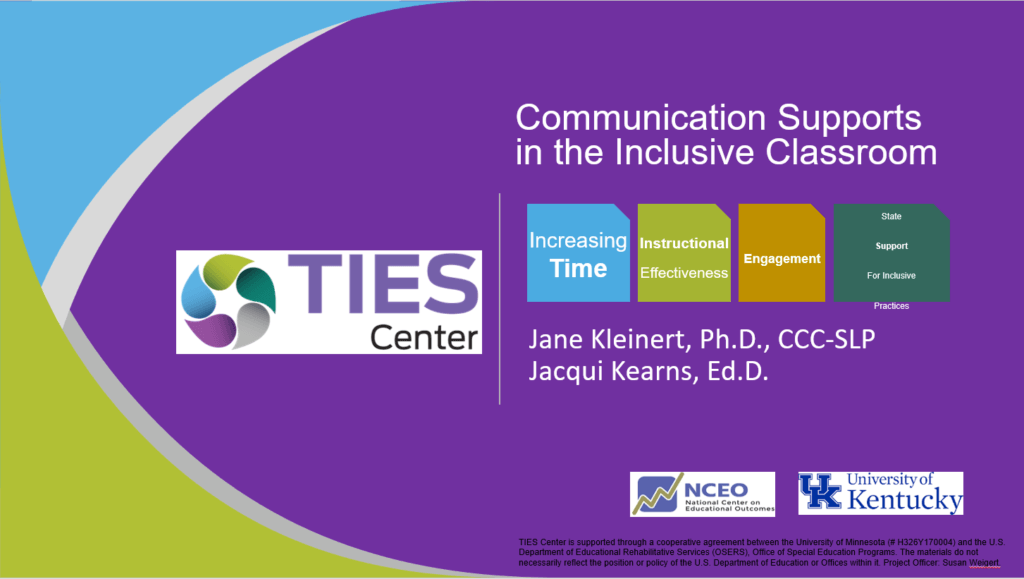K-12 Special Education
These courses assist school staff in making effective decisions for students with the most significant disabilities. Credit for early care and education is NOT provided.
Course List

This course provides an overview of the current status of employment outcomes for youths with intellectual and developmental disabilities in KY, the key steps in the transition process itself, the legal requirements and the roles of each agency, types of employment available (competitive, supported, and customized), and the development of measurable post-secondary goals for transition-age youth.

Important Predictors for Post-School Success (Revised in 2021) describes five of the strongest, evidence-based correlates of post-school competitive employment for youth with intellectual and developmental disabilities. The second part of the module discusses three additional variables related to successful transitions for students with significant disabilities and highlights the resources available to educators and other professionals in Kentucky in putting these predictor variables into practice.

This course reviews preparation for a student as they prepare to transition from high school into employment. In addition, how support organizations fit into the broader picture of transition, and how Kentucky has used opportunities like the Workforce Innovations Opportunities Act (WIOA) to broaden our supports to youth with disabilities.

This course shows the parents of children with significant disabilities how to start preparing for meaningful employment throughout the school years. We outline what competitive employment means, how to create a vision statement for the future, how to explore and develop works skills and talents, how to address concerns, and what resources you can use to help your child achieve his or her dreams.
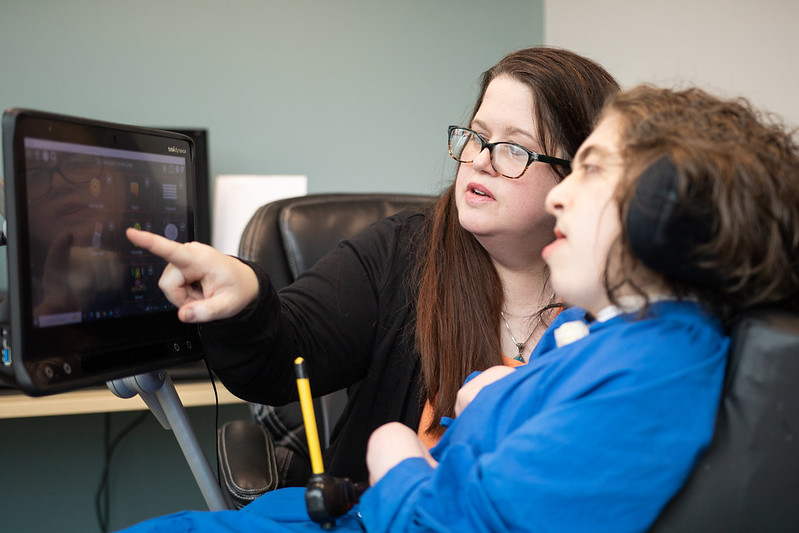
This two-hour course is designed to enhance professionals’ (teachers, VR counselors, employment specialists) skills in building partnerships with families around a vision of competitive, integrated employment for their student. The course describes a model for creating that partnership; addresses key concerns and frustrations that families may experience around employment for their student, including the potential impact of working upon SSI benefits; describes strategies for families to help their student build employment skills; and enables professionals to apply family engagement strategies to their own work. State and national resources are also shared in this course.

Describes the job development process, centered on the student; but also partnering with parents and employers. This course uses proven tools to help students with disabilities find good job matches. 2 hours, EILA and CRC approved

There are four lessons designed to engage job seekers or employees with disabilities, family members and professionals in understanding the truth about working and what Social Security says the impact will be on Supplemental Security Income (SSI) or Social Security Disability Insurance (SSDI).
Early Childhood Education providers will not receive credit for this course.
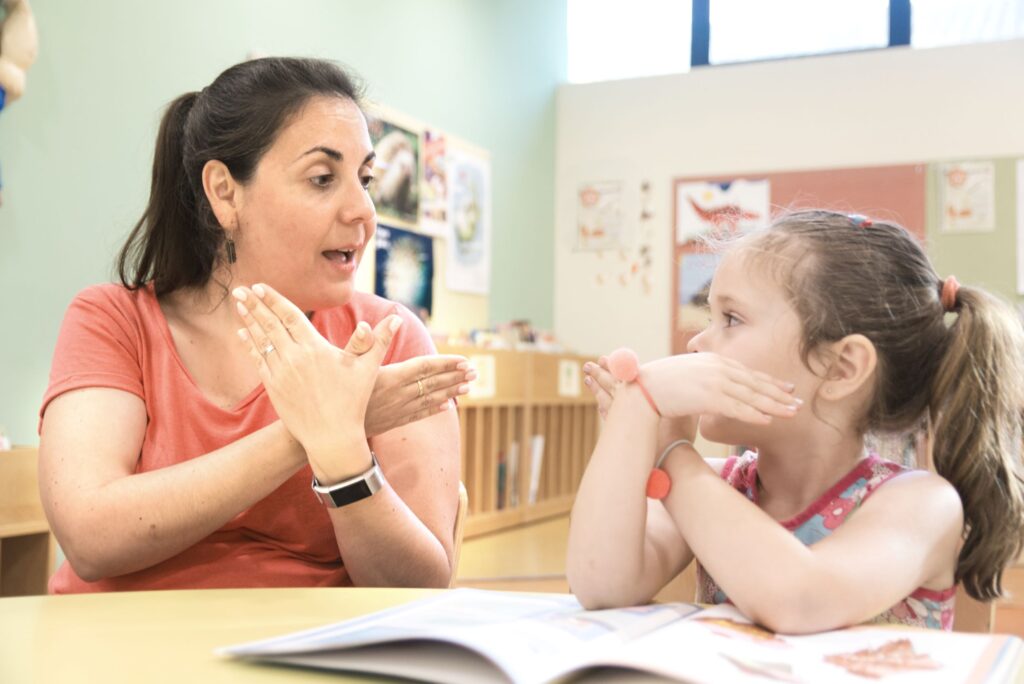
This first course includes information regarding requirements for the Cap on the percentage of students who may be assessed with an Alternate Assessment aligned with alternate academic achievement standards.

This second course is designed to help guide ARC members when completing the Participation Guidelines for the Kentucky Alternate Assessment.
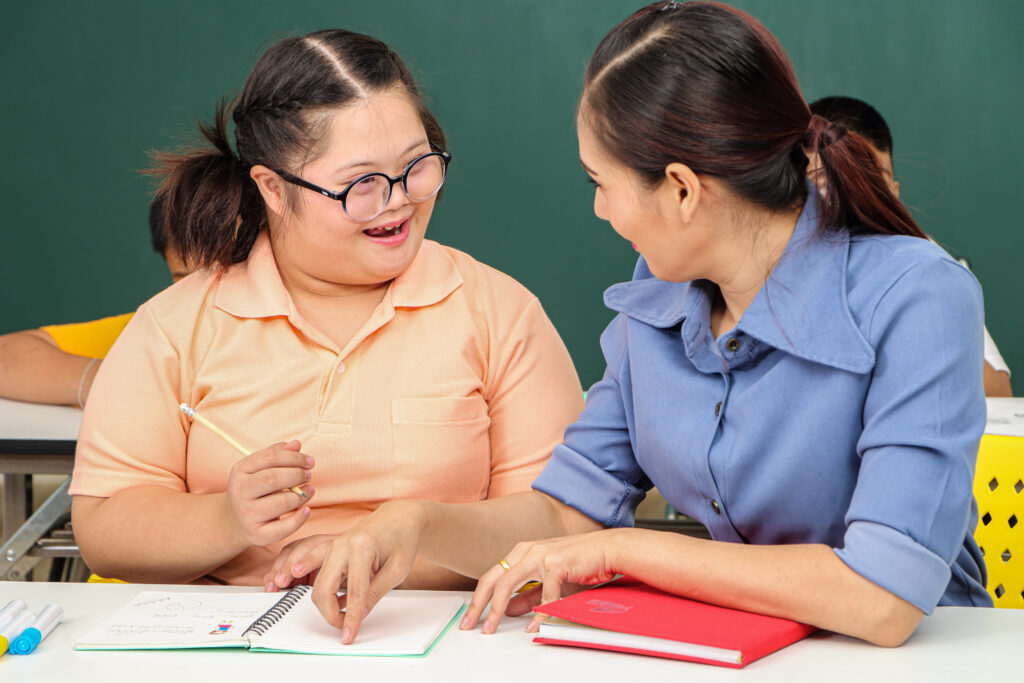
The third course reviews the Alternate Assessment Participation Guidelines and is intended guide an ARC in determining whether the Kentucky Alternate Assessment (Alternate K-Prep) based on alternate achievement standards, is the most appropriate assessment for an individual student with the most significant cognitive disability.
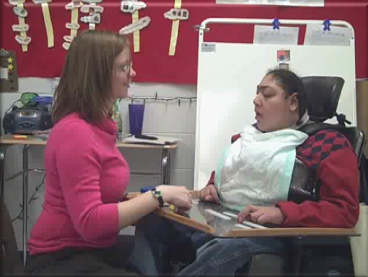
In this fourth course, the Alternate Assessment Participation Guidelines are intended to help guide an ARC in determining whether the Kentucky Alternate Assessment (Alternate K-Prep) based on alternate achievement standards, is the most appropriate assessment for an individual student with the most significant cognitive disability.

This fifth course describes how a district can use a variety of data sources to understand and describe the students who typically participate in the alternate assessment.

This course will give educators 1) an overview of what co-teaching is 2) how to establish a partnership 3) approaches 4) effective planning 5) instructional strategies and finally 6) using PDSA.
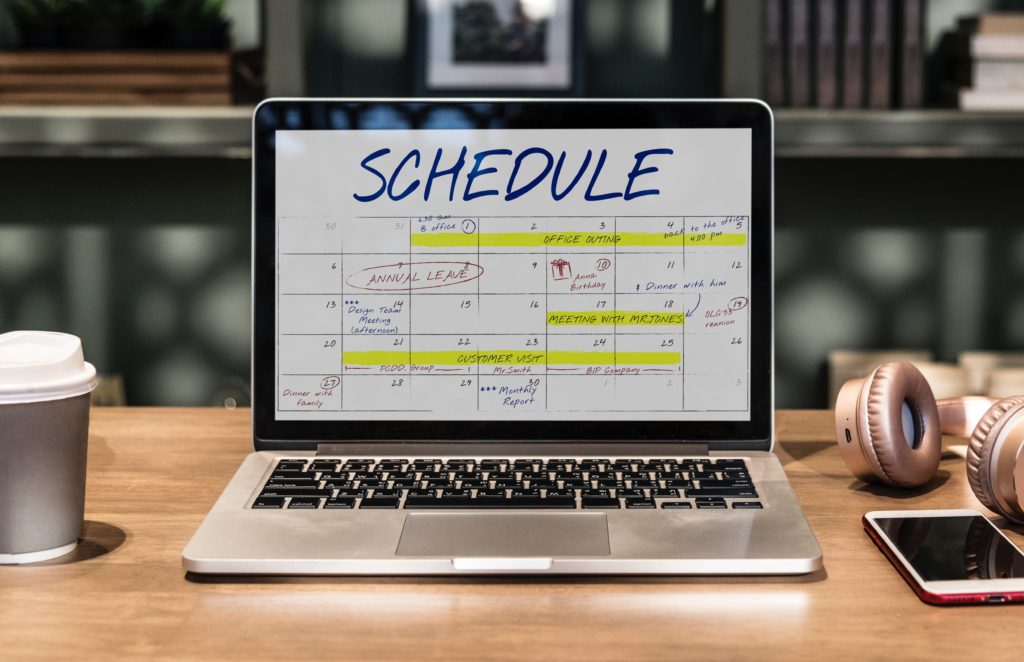
Scheduling for students with significant intellectual disabilities can be a daunting task especially since we often don’t have control over changes to the master schedule. This is compounded in most cases by teachers serving multiple grade and ability levels. It is very important to “hit the ground” running with a well-planned schedule at the beginning of each year so that bad habits aren’t formed and routines are clearly established for students and adults.

Literacy is the ability to read and interact with book and text materials. But how do we include children with disabilities who are unable to access traditional reading materials? Through the information presented in this course, you will understand the components of literacy for students with moderate and severe intellectual disabilities.

Prompting is an effective practice to increase the success and generalizability of target skills or behaviors for learners with autism. In this course, you will explore two external courses to learn more about promoting and how to apply prompting in activities.

This course provides numerous examples of instructional strategies that you may use as a starting point in planning appropriate programming for your students. The content is not intended to be fully inclusive.

Building teacher and paraprofessional teams is key to creating a positive work environment and a positive learning environment for students.
Paraprofessionals are an essential part of the team to support student learning; make sure paraprofessionals are made to feel valuable on a daily basis.
Paraprofessionals are an essential part of the team to support student learning; make sure paraprofessionals are made to feel valuable on a daily basis.

There needs to be a willingness to follow through, to be consistent and to change program when it is not working. This may mean to seek assistance from a support person in your district to ensure we are teaching students alternative ways to respond to stress and emotions.

In this course, you will identify types of data collection systems and use data to make informed decisions for students with moderate to severe disabilities.

A functional behavior assessment can be used when the intensity, duration, or type of interfering behavior creates safety concerns or impacts a child’s development. In this course you will explore a module hosted through AFIRM.
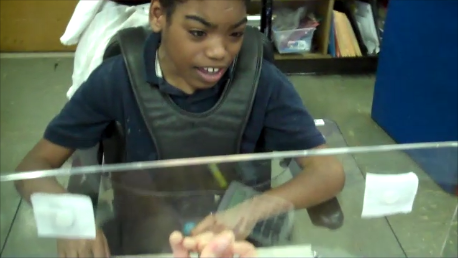
The goals of this course are to 1) describe the rationale for the use of visual supports 2) identify the components of visual supports in the classroom3) develop, organize, and implement visual supports in the classroom and 4) develop, implement, and track outcomes of visual supports.

Annual update on alternate assessment for students with the most significant disabilities in Kentucky.
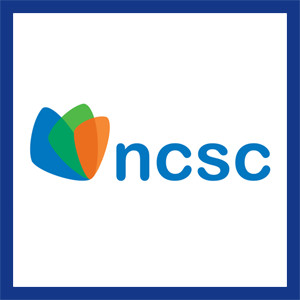
This series of professional development modules focuses on basic elements of supporting communication and language development in students who do not use oral speech and who also may have intellectual disabilities.
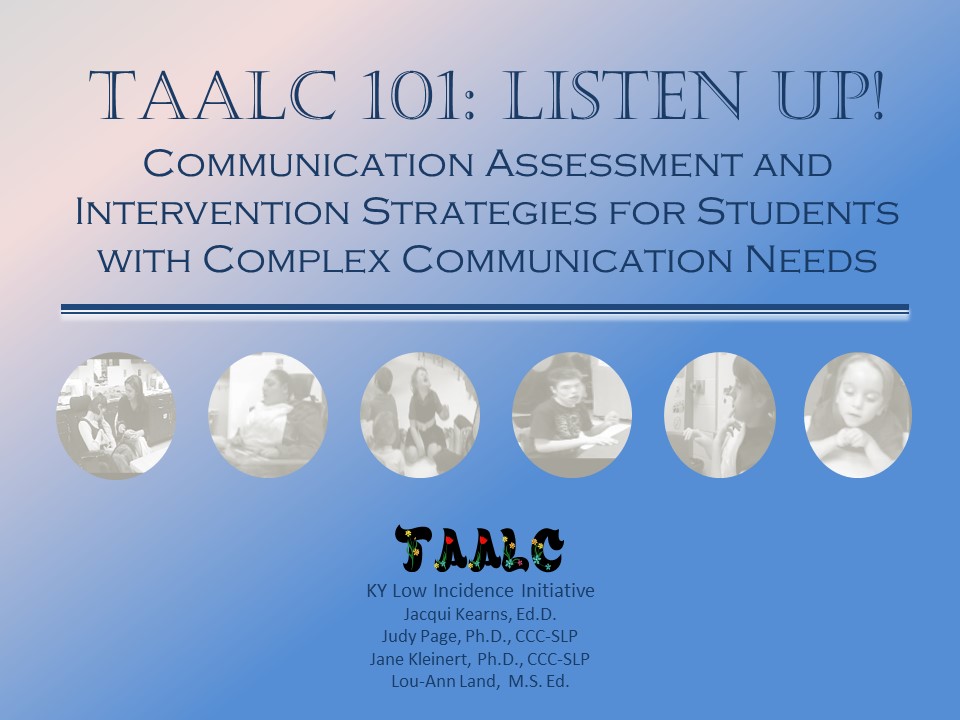
Communication should be the FIRST consideration in determining specially designed instruction for students. The Listen UP series of modules was created to equip school teams and families with the skills needed to increase a student’s communicative abilities through assessment, intervention and AAC options.
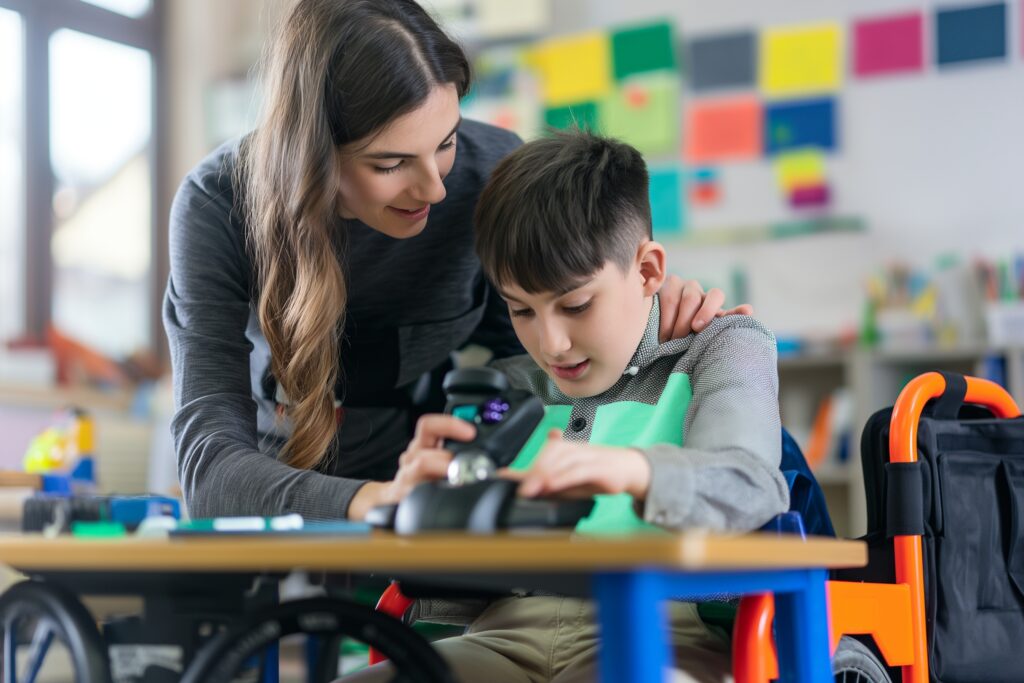
Communication accessible classrooms are learning environments where all students, regardless of their communication abilities or disabilities, can fully access and participate in learning. This course provides educators, SLPs, and any professional with information on the benefits of AAC, how to incorporate AAC into the classroom, and strategies for successful AAC use.
Course Length: 1.5 hours
ASHA CEUs = .15
EILA Credit

